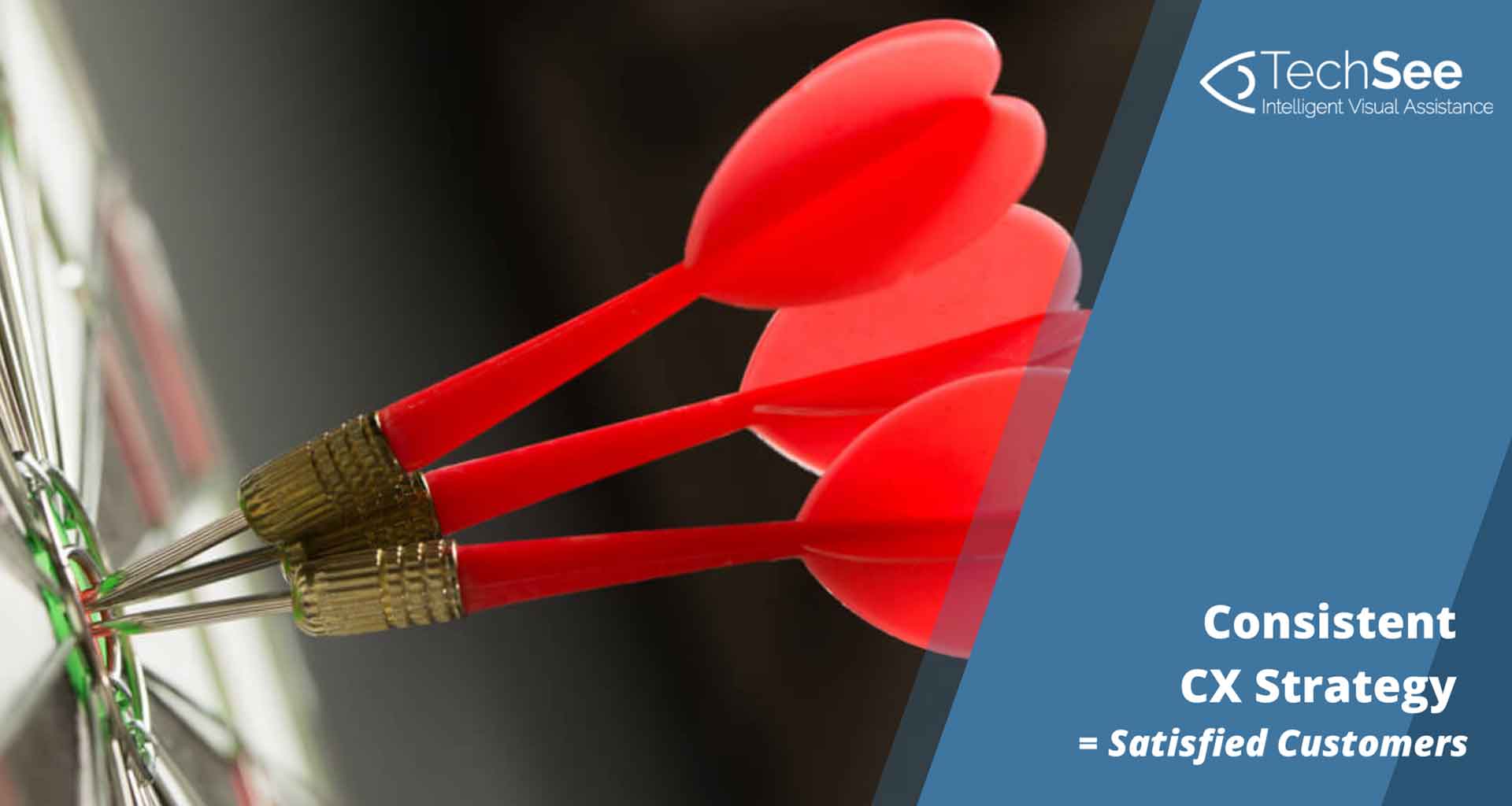Contents
Consider this example highlighting the importance of a consistent customer experience.
Sam travels often for business. On his last trip to London, he stayed at the Lord Rochester Hotel, since his tried-and-trusted Hotel Miranda Grand was overbooked. The receptionist at the Lord Rochester upgraded his room, comped him for food and spa services, and generally treated him like royalty.
On his next visit to London, he insisted on being put up, along with his entire team, at the Rochester. However, this time he was given a standard room, no little extras and was treated as a “regular” guest.
Was this evidence of a successful and consistent customer experience strategy? Will Sam be back?
Why is Consistency Important in Customer Service?
Delivering a consistent customer experience is imperative for companies that want to drive loyalty. Inconsistent interactions confuse customers and can damage the brand’s reputation. This critical element of any CX strategy should be top of mind for everyone from the C-suite to frontline personnel. This article underscores the importance of creating a streamlined, reliable and consistent user experience and explains several technological approaches that can help deliver it.
Companies have more opportunities than ever to interact with their customers, due to the increasing number of customer touchpoints, for example:
- ecommerce sites
- self-service channels
- social media
- physical locations, and
- phone-based service.
In fact, in 2017, 95% of customers used three or more channels to connect with a company in a single service interaction. While these connections can deepen the customer experience through providing opportunities for building relationships, they also present risks. Every interaction has the potential to delight the customer, raising their expectations, or disappoint them, lowering satisfaction and increasing the likelihood of churn.
Consumers generally don’t like surprises, and many customers are willing to churn due to inconsistent experiences. That’s exactly why companies must strive to make sure all touchpoints are harmonized in terms of content, messaging and tone of voice. This includes all marketing communications and customer service scripts, at every milestone along the customer journey.
Consistent Customer Experiences in Action
An example of consistency in customer service is ensuring that when Sales renews a service contract, Marketing is made aware of the transaction so their messaging can be tailored appropriately.
Another consistent client experience example is if Customer Service has not yet resolved a customer’s issue, a planned upsell should be delayed. Additionally, if Sam was a VIP once, he should be a VIP next time too.
Elements of a Consistent Customer Experience Strategy
Crafting a consistent customer experience strategy goes way beyond ensuring that Housekeeping always leaves mints on a customer’s pillow, or that Customer Service is always generous in extending the product return window. It means making the customer feel confident that they will get what they expect during every interaction.
Customer Journey Consistency
Customers expect a clear path to a successful and satisfying experience right along the journey – presale, at the point of purchase, and throughout post-sale service. Any incongruous interaction can spoil the overall experience.
For example, imagine that you’ve recently subscribed to a new lawn service. The onboarding meeting went well, the gardeners showed up on time, and your lawn has never looked better. However, when the bill comes, there is an error, one that is decidedly NOT in your favor. Even if Customer Service apologizes and issues a new bill immediately, an otherwise perfect customer experience has been ruined.
Consider the following example that displays why a consistent client experience is so vital. You’ve researched smart TV’s for months and have finally chosen the right one. The ordering process is smooth, the package arrives on time, and everything is intact. However, the installation instructions are so complicated that the TV sits idle for a week until you have the time and energy to call Customer Service for help. Was that a good customer experience?
Emotional Consistency
Consistency builds trust. Customers trust banks that are in the top quartile of delivering consistent customer journeys more than banks in the bottom quartile. Meanwhile, 51% of customers will believe positive information about a company they trust after hearing it just once or twice, while only 15% will believe positive information about a company they distrust after hearing it the same number of times. They are also, naturally, more likely to disseminate positive word-of-mouth about the company they trust.
For example, Astroflash Telecom consistently calls its customers to offer them better deals when they become available, while Chronos Telecom offers better deals only when customers request them. Which company is more likely to win repeat business?
Channel Consistency
With so many customer touchpoints and channels, seamless omnichannel experiences allowing customers to move back and forth from one device to another are vital. Customers want to receive service anywhere, at any time, and any which way they like, for example:
- web
- voice
- chat
- messaging
- social media
- video and
- email.
However, it is only when the enterprise delivers an integrated and seamless experience across all channels that it can achieve true consistency.
Take Disney, which leads the way with its omnichannel visitor experience. Starting with a robust and mobile-responsive website, customers seamlessly transition to the travel-planning site, as well as the My Disney Experience tool. Once inside the park, a mobile app helps locate the attractions, provides estimated wait times, and even integrates with the Fast Pass VIP option. Meanwhile, the Magic Band device acts as a hotel room key, photo storage device, and a food ordering tool. It’s hard to be more consistent than that.
Is Technology the Answer to Consistency in Customer Service?
Achieving true consistency might seem like a lot of work, but it’s not as difficult as it sounds. A range of readily available technologies can make the customer experience as frictionless as possible.
Data Analytics
53% of executives are not yet treating data as a business asset and 52% admit that they are not competing on data and analytics. But implementing the right tools to help businesses understand their data and derive actionable insights is key to providing a consistent customer experience.
The use of AI technologies such as machine learning and natural language processing can help analyze customer sentiment and customer feedback at scale. This enables enterprises to find that sweet spot every single time through a consistent user experience strategy.
AI-Based Personalization
With 80% of consumers more likely to make purchases from brands that provide personalized experiences, the ability to treat customers as individuals is a win-win. AI is quickly becoming a priority for companies to boost their CX at scale by providing customers with a memorable, personalized and consistent experience.
These tools include for example:
- speech analytics that monitor customer emotions in real time
- text analytics for email, messaging, and social media, and
- predictive analytics, making it possible to apply past solutions to upcoming problems by reviewing performance in areas as diverse as call volume, service level, handle time, and customer satisfaction.
Robotic Process Automation (RPA)
Automation means delivering a clear and consistent user experience that takes the uncertainty and the potential for human error out of every interaction. With recent advances in artificial intelligence, augmented reality and computer vision, self-service options and agent decision support can now be taken to the next level. Systems can be enabled to more easily understand the customer’s issue and determine the optimal path to resolution. This allows customers to address issues faster and independently.
In fact, 88% of consumers expect a company to have a self-service portal. In addition, Gartner had predicted that by 2021 85% of all customer interactions would be handled by chatbots and the average person would have more conversations with bots than with their partner.
Importance of a Consistent Customer Experience
Every company wants to create long-lasting relationships, boost retention and increase repurchasing rates. To achieve this, enterprises must find ways to provide customers with a consistent experience through every phase of their lifetime journey. That’s why digital transformation and pan-organizational buy-in are essential when it comes to creating the consistent customer experiences that keep customers coming back for more.






